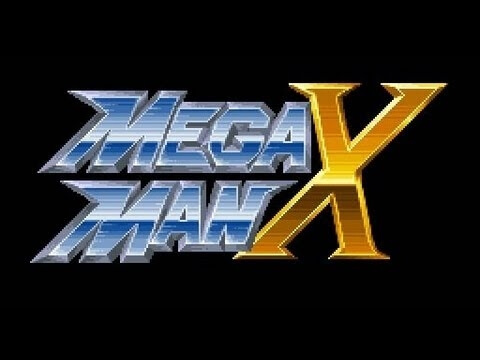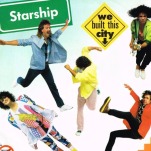In the year 199X—or 1993, if you want to get all nit-picky about it—Capcom’s celebrated Mega Man series was becoming a victim of its own success. By then, the release of the milquetoast Mega Man 5 had made it clear that the series’ fans were going to show up for pretty much any new battle against Dr. Wily and his increasingly absurd groupings of Robot Masters, regardless of how little it might innovate on the series’ base design. (Shout-out to Gyro Man: You do you, buddy.) This trend culminated in a series of safe, uninspired choices like the functional but wholly unmemorable Mega Man 6, which came out on the old, reliable NES nearly three years after most developers had moved on to the far flashier and more powerful Super Nintendo.
But even as it was clinging to the past, trying to find the next set of robot dog armor to liven up another moribund installment, there was a similar evolutionary leap working its magic on the Mega Man team. The end result was a brand new sub-series of Mega Man games, one that, like its long-sealed protagonist, tapped into its true potential only after a few extra years of consideration and care. When Mega Man X finally arrived in the States in January of 1994, it marked a delayed transition into the 16-bit era that was just as confident as anything Nintendo had managed with its own classic series in the preceding years, sporting gorgeous new graphics, one of the best soundtracks of its era, and platforming action that took ample advantage of the added horsepower available on its new home. X (read like the letter, not the Roman numeral, to the consternation of confused players and parents for going-on 25 years) wasn’t just a technical triumph, though. It also demonstrated a reinvigoration of love from creator to creation, as Capcom lavished the game with lush new art, a more thoughtfully constructed storyline, and a thousand tiny details designed to make its brave new world feel just a little bit more real.
Nowhere is that attention to detail in better supply than in the high-flying battleground patrolled by Storm Eagle, one of the game’s eight robot bosses. X might have updated and polished the Mega Man design (ditching the classic “____ Man” boss conventions for a roster of anthropomorphized beasts), but it held fast to the series’ most basic tenets, including letting players choose the order in which they battled through its stages and the ability to absorb the weaponry of fallen foes. Picking Storm Eagle sent X to what might be the least accessible airport in all of video game history, forcing him to climb up, down, and across conveyor belts, floating platforms, and canisters of flaming gas before ultimately boarding Eagle’s battleship to take the Maverick down.
That focus on verticality was one of the key changes X made to the Mega Man formula. Although the NES games had had numerous vertical climbing sections over the years, they were always confined to scrolling on a single axis; the SNES allowed X to roam in any direction, and the developers gifted him a game-changing ability to stick to and climb almost any surface to tackle these new ascents. That wall-climb gets a workout in Storm Eagle’s stage, as players navigate across the airport’s precarious, turret-covered towers and yawning, heavily patrolled gaps. It also opens up the opportunity to be far more daring with his jumps, sending X sprint-leaping out into the open air with the confidence that he’ll probably be able to stick the landing somehow. After years of being confined to the simple, blocky movements of the original series, it feels refreshing and empowering in a way that’s hard to overstate.
Looking back at those earlier NES games, the clearest touchstone for this kind of high-flying obstacle course is probably Air Man’s stage from Mega Man 2. Like Storm Eagle’s Sky Area, it features tricky platforming over open-air death, plus a series of enemies that have to be dislodged from their personal floating platforms so that our hero can use them as stepping stones. But while Air Man’s stage is almost deliberately abstract, taking place in an airy, clouded environment, Storm Eagle’s level ironically grounds itself in the real world. The level design and art intentionally play up the reality of its airport locale, with certain structures visibly recognizable as air traffic control towers, and a memorable moment when an observation-deck window suddenly shatters, emphasizing the physicality of the space. That devotion to real-world spaces is a trick the series could never quite manage on the older hardware, and it’s just one way X demonstrated its willingness to evolve.
Meanwhile, it’s easy to see the evolution of the team’s ideas on level design play out in the airport’s various nooks and crannies. Although Mega Mans 5 and 6 both played with ideas like unlockable collectibles and alternate paths through levels, it was only with X that the series truly embraced the idea of the secret, hiding all sorts of goodies and upgrades in plain and not-so-plain sight. Most of the airport’s hidden treasures (including the most annoyingly useless of X’s four armor enhancements) are only accessible if he’s armed with the Fire Wave from Flame Mammoth’s stage—the better to blow up all those wall-mounted fuel tanks, you see. But the best rewards require some creative climbing, too, with a Sub Tank (refillable health) hiding at the tippy-top of the level, and a health bar-extending Heart Tank stashed away right at the level’s start, requiring an exhilarating leap into open space to acquire. These aren’t just hollow treats, either; they represent a real breaking point in the games’ design, as stages become something to scour and explore, rather than simply to traverse and survive.
But X’s maverick commitment to breaking from Mega Man convention is clearest in the connections that exist between its eight stages, as actions in one level sometimes radically affect the environment in another. The game only does this trick twice, but it’s shocking both times; one links together the levels that play home to Chill Penguin and Flame Mammoth, while the other concerns Storm Eagle and his flying fortress of doom. X’s arrival on Eagle’s ship, the Death Rogumer—also the behemoth looming over the boss battle from the game’s iconic highway intro—ends up blowing up most of its structure in dramatic fashion, sending the ship plummeting toward the ground, and making the boss fight itself feel quantifiably metal as fuck. The ship’s unseen crash landing, meanwhile, knocks out the power in large chunks of the electrical plant level occupied by Eagle’s teammate Spark Mandrill, rendering several fights in that stage significantly easier. It also clears the craft itself from the game’s overworld map, another one of those “attention to detail” touches that show, time and time again, that extra thought was being put into this game’s design at every point along the way.
It’s almost a shame, then, that Storm Eagle himself is a lackluster boss. The character’s design is strong, with an arrogant beak and expansive wings. And the basic idea of the fight, with the most dangerous threat being his ability to push you toward the open edges of the battlefield, is a novel twist that adds an environmental hook to the series’ normal run-and-gun action. In practice, though, Eagle tends to over-commit to flashy-looking but easily dodged dives, making him one of the easiest bosses to dismantle with nothing but the default X-Buster. At least the weapon X steals from him is a treat: The Storm Tornado, besides turning our hero a rather fetching shade of purple, creates a screen-spanning tunnel of wind that can tear most common enemies apart. (To dip back into Mega Man 2 terminology, its utility is practically Metal Blade-esque.)
As the years went on, the X games would eventually fall prey to the same diminishing returns that necessitated their creation in the first place. (Although these sequels tended to just get weirder and more sloppy, instead of more predictable and rote.) The first, though, remains a triumph of evolving game design, an example of designers caring with every fiber of their being about making the best possible version of a character, and a kind of gameplay, that was already beloved by millions. At every step, you can feel the responsibility weighing on them, the knowledge that they were only ever going to get one “first Mega Man game on the SNES.” (And god knows it wasn’t going to be Mega Man Soccer.) The whole thing might have come crashing down eventually—something you can watch play out in real time starting today with the series’ re-release as the X Legacy Collections—but for at least the first handful of entries, it soared as confidently as anything its storied parent franchise has ever managed to achieve.







































